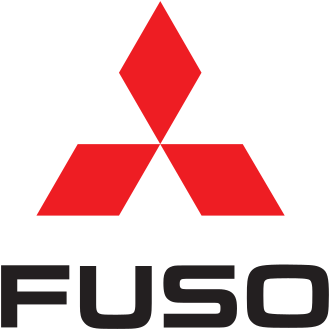Mitsubishi Fuso Truck & Bus History

The Mitsubishi Fuso Truck and Bus Corporation is a manufacturer of trucks and buses. It is headquartered in Kawasaki, Kanagawa, Japan. Currently, it is 89.29 % owned by Germany-based Daimler AG, under the Daimler Trucks division.
Fuso derives from the ancient Chinese term Fusang, for a sacred tree said to grow at the spot in the East where the sun rises, and has been used to refer to Japan itself. The actual Fuso tree is a hibiscus.
In 1932, the first B46 bus (the Fuso) was built at the Mitsubishi Shipbuilding Company's Kobe Works. Two years later, the Mitsubishi Shipbuilding Company was renamed Mitsubishi Heavy Industries (MHI). Three years after that, the MHI motor-vehicle operations at the Kobe Works were transferred to the Tokyo Works.
In 1949, the Fuso Motors Sales Company was established; it was renamed the Mitsubishi Fuso Motors Sales Company in 1952. In 1950, Mitsubishi Heavy Industries was split into three companies: East Japan Heavy Industries, Central Japan Heavy Industries and West Japan Heavy Industries. Two years later, Central Japan Heavy Industries was renamed Shin Mitsubishi Heavy Industries; West Japan Heavy Industries was renamed Mitsubishi Shipbuilding and Engineering Company and East Japan Heavy Industries was renamed Mitsubishi Nippon Heavy Industries (MNHI). Products from the companies were distributed by Mitsubishi Fuso Motor Sales because of brand recognition.
In 1957, MNHI integrated the Tokyo and Kawasaki Works into the Tokyo Motor Vehicle Works. Seven years later, Mitsubishi Nippon Heavy Industries, Shin Mitsubishi Heavy Industries and Mitsubishi Shipbuilding and Engineering Company merged to form Mitsubishi Fuso Heavy Industries; Mitsubishi Fuso Motors Sales split into two divisions: Shin and Fuso Motors Sales Company. Sharing a logo, they split the distribution of heavy and light machinery; Shin distributed light machinery branded as Mitsubishi, and Fuso distributed heavy machinery branded as Fuso. In 1970 MHI signed a joint-venture agreement with Chrysler Corporation, establishing the Mitsubishi Motors Corporation (MMC), and MHI transferred its motor-vehicle operations to MMC.
In 1975, MMC opened the Nakatsu Plant at its Tokyo Motor Vehicle Works; five years later, it opened the Kitsuregawa Proving Grounds. Four years after that, MMC merged with Mitsubishi Motor Sales Company. In 1985, MMC and Mitsubishi Corporation established the joint-equity company Mitsubishi Trucks of America in the United States. Eight years later, MMC and Chrysler dissolved their equity partnership. The following year, MMC and Mitsubishi joined to design, build and distribute the Mitsubishi Lancer.
In 1999 MMC and Volvo joined their truck and bus operations, and Volvo acquired five percent of MMC. Two years later, DaimlerChrysler replaced Volvo as MMC's truck and bus partner and MMC renamed the Tokyo Plant the Truck and Bus Production Office (also known as the Kawasaki Plant).
In 2003, the Mitsubishi Fuso Truck and Bus Corporation (MFTBC) was established. DaimlerChrysler, Mitsubishi Motors Corporation and other Mitsubishi companies acquired 43-, 42- and 15-percent shares, respectively, in MFTBC. In 2005, Mitsubishi Motors Corporation transferred its MFTBC shares to DaimlerChrysler as part of their compensation agreement for financial damages resulting from quality problems and recalls at MFTBC. DaimlerChrylser and the Mitsubishi companies hold shares of 89 and 11 percent, respectively. In 2006, MFTBC moved its headquarters from Tokyo to Kawasaki-shi, Kanagawa; the following year, DaimlerChrysler sold its majority stake in Chrysler Corporation to Cerberus Capital Management. The corporation was renamed Daimler AG, and the DaimlerChrysler Truck Group was renamed Daimler Trucks; MFTBC is part of the Daimler Trucks Division of Daimler AG.
